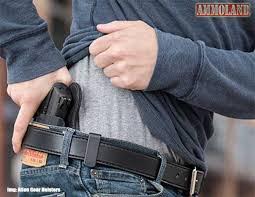 As a NRA pistol instructor, I am often asked what the ideal concealed carry gun is. Well, to paraphrase the late, great Jeff Cooper,”… the one ya got with ya.” Much like clothing, cars, homes, and other personal possessions, the choice of a concealed carry gun is an individual one. Let’s take a look at some of the criteria we instructors suggest to students.
As a NRA pistol instructor, I am often asked what the ideal concealed carry gun is. Well, to paraphrase the late, great Jeff Cooper,”… the one ya got with ya.” Much like clothing, cars, homes, and other personal possessions, the choice of a concealed carry gun is an individual one. Let’s take a look at some of the criteria we instructors suggest to students.
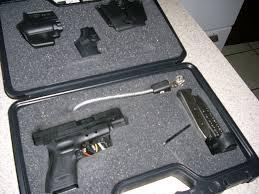 The single most important characteristic of a personal protection gun is functional reliability. A defensive handgun must work every time the trigger is pressed. If your gun malfunctions regularly, even once or twice every 50 rounds, you cannot count on it in a lethal force situation. Change ammunition first and if that doesn’t solve the problem, have a competent gunsmith examine your gun. Your life or the lives of other innocents could be at stake.
The single most important characteristic of a personal protection gun is functional reliability. A defensive handgun must work every time the trigger is pressed. If your gun malfunctions regularly, even once or twice every 50 rounds, you cannot count on it in a lethal force situation. Change ammunition first and if that doesn’t solve the problem, have a competent gunsmith examine your gun. Your life or the lives of other innocents could be at stake.
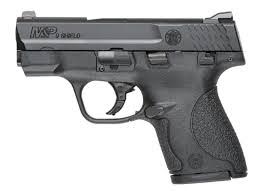 One must choose between either double action revolver (I cannot recommend a single action revolver for self-defensive purposes) or a semi-auto pistol. Revolvers are simple to operate, have great “out of the box” re
One must choose between either double action revolver (I cannot recommend a single action revolver for self-defensive purposes) or a semi-auto pistol. Revolvers are simple to operate, have great “out of the box” re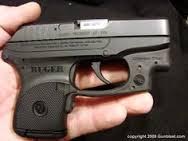 liability, and will digest almost any type of ammunition that is fed through them. One drawback to a revolver is the limited number of rounds that they are capable of holding. On the other hand, semi-auto pistols of comparable size usually hold 1 or 2 or more rounds than a revolver. Malfunctions in a revolver are rare and easier to overcome; semi-autos require more detailed training.
liability, and will digest almost any type of ammunition that is fed through them. One drawback to a revolver is the limited number of rounds that they are capable of holding. On the other hand, semi-auto pistols of comparable size usually hold 1 or 2 or more rounds than a revolver. Malfunctions in a revolver are rare and easier to overcome; semi-autos require more detailed training.
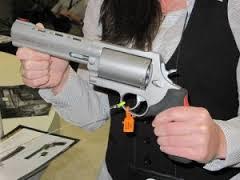 Confidence and comfort are big factors in choosing a defensive pistol. The user must enjoy shooting and handling their gun and understand its functional controls. If the gun isn’t comfortable to shoot, the owner may neglect to practice often and learn defensive pistol skills and tactics. The size of the pistol is important also. If the gun is too big for the user, he or she also
Confidence and comfort are big factors in choosing a defensive pistol. The user must enjoy shooting and handling their gun and understand its functional controls. If the gun isn’t comfortable to shoot, the owner may neglect to practice often and learn defensive pistol skills and tactics. The size of the pistol is important also. If the gun is too big for the user, he or she also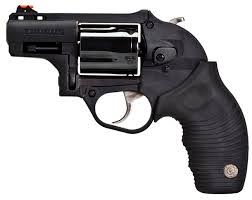 won’t practice often enough. The same holds true for a very small pistol. Although it might be highly concealable, it also might be sheer misery to shoot it and practice, practice, practice, is very, very important.
won’t practice often enough. The same holds true for a very small pistol. Although it might be highly concealable, it also might be sheer misery to shoot it and practice, practice, practice, is very, very important.
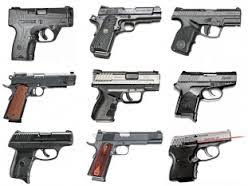 Caliber is another factor in choosing a carry gun. Huge improvements in ammunition technology and bullet design have made some of the smaller calibers like .380 Auto and 9mm much more effective defensive rounds. Heavy magnums like the .44, .454, .460, and .500 are fine for the woods, but not for the urban frontier. There is no perfectly right caliber for defensive purposes. Larger, more powerful cartrid
Caliber is another factor in choosing a carry gun. Huge improvements in ammunition technology and bullet design have made some of the smaller calibers like .380 Auto and 9mm much more effective defensive rounds. Heavy magnums like the .44, .454, .460, and .500 are fine for the woods, but not for the urban frontier. There is no perfectly right caliber for defensive purposes. Larger, more powerful cartrid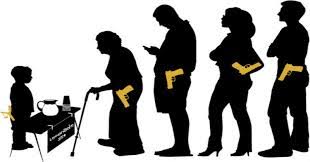 ges might be great man-stoppers, but if you can’t control your handgun, a miss with any large round is still a miss and might be catastrophic.
ges might be great man-stoppers, but if you can’t control your handgun, a miss with any large round is still a miss and might be catastrophic.
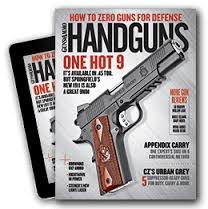 These are just a few of the considerations shooters should look for in a personal protection and concealed carry gun. Other options include sights, grips, a new or used gun, foreign or domestic manufacturer, and the ability to add after-market modifications. There are literally thousands of handguns available to the consumer and choosing one can be very intimidating. Start slow, research options, take a firearms safety course and a concealed carry course. Look for opportunities to shoot different pistols. You will find that one “perfect” or nearly perfect handgun.
These are just a few of the considerations shooters should look for in a personal protection and concealed carry gun. Other options include sights, grips, a new or used gun, foreign or domestic manufacturer, and the ability to add after-market modifications. There are literally thousands of handguns available to the consumer and choosing one can be very intimidating. Start slow, research options, take a firearms safety course and a concealed carry course. Look for opportunities to shoot different pistols. You will find that one “perfect” or nearly perfect handgun.
Be safe and good shooting.
Colonel Smoothbore